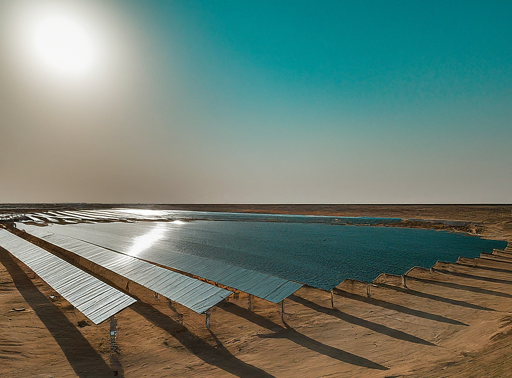GlobalData predicts that, at its current pace, Saudi Arabia’s renewable power capacity could increase at a compound annual growth rate (CAGR) of 40.1% between 2023 and 2030, to reach 31.5 GW by 2030 and 63.1 GW by 2035.
Between 2012 and 2022 Saudi Arabia added 700 megawatts of renewable energy. Between 2022 and 2024 the Kingdom expanded renewable power capacity by 300% adding 2.1 gigawatts of capacity. According to GlobalData solar energy accounts for 82.6% of Saudi Arabia’s renewable energy mix.
In its latest report, “Saudi Arabia Power Market Size, Trends, Regulations, Competitive Landscape and Forecast, 2024-2035,” GlobalData concludes that Saudi Arabia has a “good chance” of getting close to its target 130 GW of renewables by 2030 if it persists with strict policy implementation.
Writing for PV-Magazine, Patrick Jowett notes:
“GlobalData predicts that, at its current pace, Saudi Arabia’s renewable power capacity could increase at a compound annual growth rate (CAGR) of 40.1% between 2023 and 2030, to reach 31.5 GW by 2030 and 63.1 GW by 2035. It adds that Saudi Arabia’s renewable power projects under construction exceeded 8 GW at the end of last year, primarily due to several projects being awarded through auctions in the past eighteen months.”
In February 2024, The Saudi Power Procurement Company, a company responsible for procuring power in Saudi Arabia, released a list of eligible bidders for a fifth round of solar projects with a combined capacity of 3.7 GW. The projects were announced as part of the country’s National Renewable Energy Programme. These include, “The 2 GW Al Sadawi solar plant, which will be built in the Eastern Province of Saudi Arabia; the 1 GW Al Masa’a project, which will be built in the Province of Hail; and the 400 MW Al Henakiyah 2 and 300 MW Rabigh 2 projects, which will be built in the Provinces of Madinah and Makkah.”
Yasmine Ahmed writing for RatedPower recently listed the current five largest solar plants in Saudi Arabia as:
Sakaka IPP
Outside of the projects that will come online over the next few years, there are plenty of operational facilities that are already making a significant contribution. Perhaps the most impressive is the Sakaka IPP, a 405 MW project in Sakaka City. This was the first utility-scale renewable project under NREP and has proven to be a success since it was commissioned in 2020.
Rabigh Solar Photovoltaic Park
Similarly, the 400 MW Rabigh Solar photovoltaic (PV) Park came online in 2023 through a collaborative venture between Marubeni and Al Jomaih Energy and Water. The project is the second largest in the country and is expected to provide enough clean energy to sustain over 45,000 households.
Jubail 3A IWP Solar PV Park
In third place is the Jubail 3A IWP Solar PV Park. While this was primarily a water plant capable of generating 600,000 cubic meters of drinkable water each day, the solar power extension has a capacity of 45.75 MW, enough to meet 20% of the water plant’s daily power requirements.
Haradh Solar PV Park
The Haradh Solar PV Park is the fourth largest, with a 30 MW capacity. Like the Jubail 3A IWP, it’s located in Saudi Arabia’s Eastern Province. Haradh Solar PV Park came online in 2022 after being developed in multiple phases, and it generates enough electricity to offset over 50,000 tonnes of CO2 emissions each year.
Al Kharj Solar PV Park
Coming in fifth is the Al Kharj Solar PV Park, with a capacity of 15 MW. The oldest of these five, Al Kharj, has been operational since 2019 in Al Riyadh. The fact that a project of this size is one of Saudi Arabia’s largest while projects anywhere from 40 to 100 times the size are just a few years away shows how fast things are moving in this part of the world.
Ultimately, renewables are expected to account for 35.4% of Saudi Arabia’s capacity mix by 2035, up from 3.2% in 2023.
Sudeshna Sarmah, an analyst at GlobalData, says the growth of renewable power in Saudi Arabia has picked up pace recently because of the country’s policy to diversify its sources to ensure supply security in the long term.”
To read more, click here, here and here.









